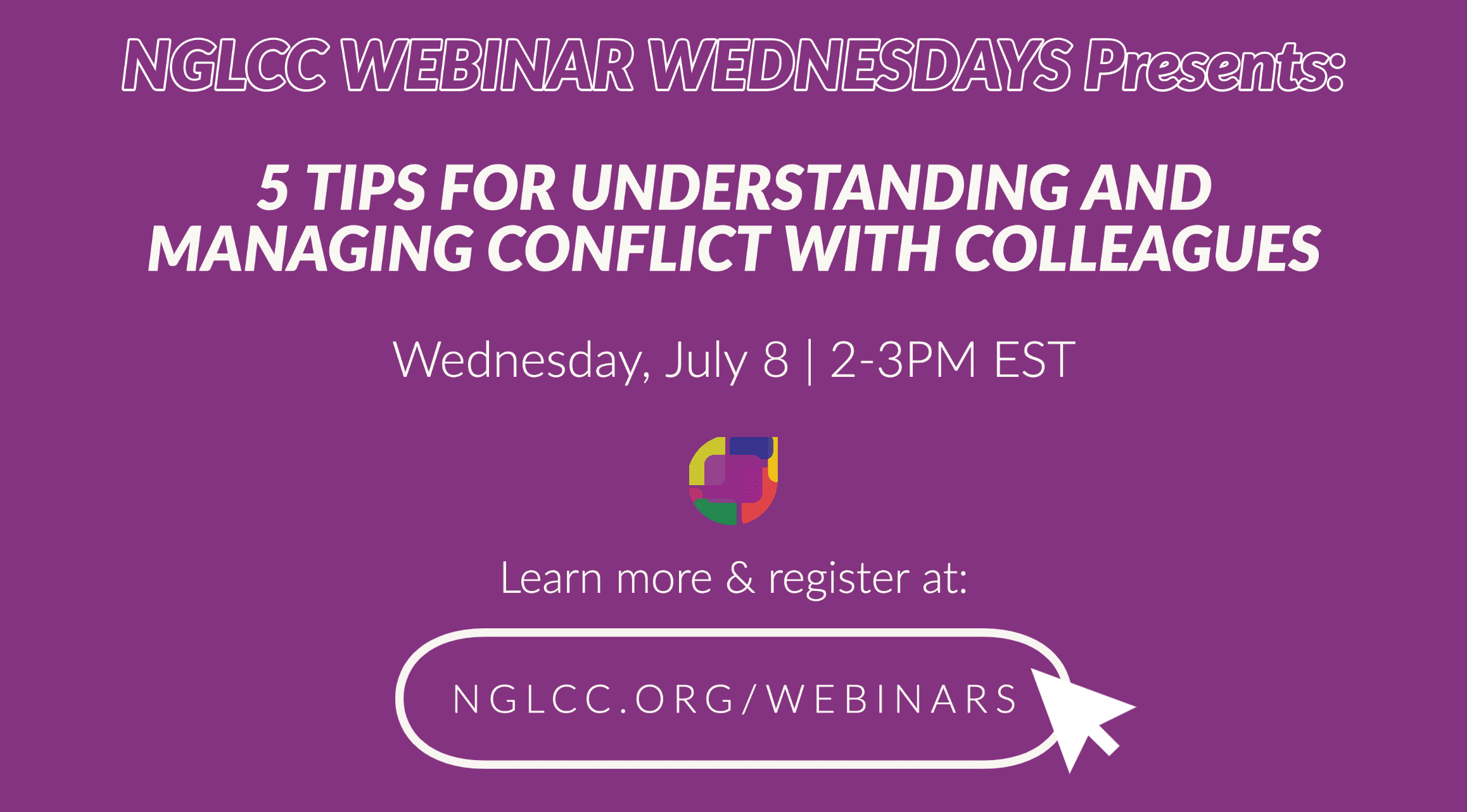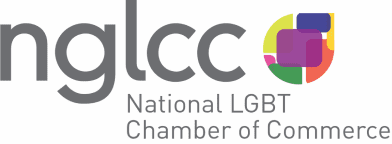
Many of us can recall instances where we had a fight or a disagreement with an employee or coworker. But not all of us have the tools to understand or mitigate the factors that contribute to these workplace conflicts. Last week, NGLCC’s Webinar Wednesday program featured Genesis Fisher, Certified LGBTBE® owner and Principal Attorney at Fisher Law Practice, P.C. Through her mediation practice, Genesis works to create healthy workplaces by addressing and preventing office tensions. Here’s some of the advice she offered to Webinar Wednesday viewers on managing and avoiding conflict with colleagues.
1. Understand the role that emotions play in a conflict.
When Genesis asks clients what emotions come up when they think about conflict, anger is a popular response. It is important to consider this emotion, among others, when examining how and why a conflict begins. Emotions often make up the backbone of the start of an argument – for example, your coworker may be exhausted and stress, triggering a disagreement. That being said, not all of the emotions that trigger a conflict are necessarily negative; some of them can be positive. The question that you must ask from here is why the feeling or subject matter is so powerful or important to someone.
2. Know the difference between positions and interests, and which to look for.
As Genesis defines these two terms, a position is what the person says they want in a disagreement or conflict. On the other hand, interests are the needs that motivate someone, whether consciously or unconsciously. Interests represent what the person’s values and wishes are, and underlie their positions. When a disagreement arises, it’s important to keep in mind that we each have important interests underlying our positions, and we need to listen for those respective needs.
3. Be sure to check in with yourself.
Conflicts in the workplace can be exhausting. If you experience one, ask yourself what headspace you’re in. This check-in process can include the following questions:
- Do I have the patience for this conversation?
- Is it triggering for me?
- Do I already have a set of expectations?
- What assumptions have I made?
- Am I already certain about how this conversation will end?
- Is this the best time for this conversation?
Taking the time to address where you’re at can ease internal tension and help you to recognize your personal needs throughout the conversation. It can also help you to be your best, patient self, and to be open to where the conversation may lead.
4. Set clear boundaries in the conversation.
Once you know where you personally are at, it is helpful to set clear boundaries for the conversation going forward. This process includes letting the other person know what your needs and limitations are. Here’s some language that Genesis provided for meaningfully engaging in this process:
- “I want to hear you out, but it’s hard to listen when you’re using that language/tone.”
- “It’s important to me to talk through this, but I’m emotionally exhausted right now. Could we talk later?”
5. Be an active listener and reflect back.
One of the most important active listening tools is a process that Genesis describes as “reflecting back.” This tool helps the other person in the conversation to feel heard, which in turn encourages peaceful dialogue and slows the pace of an otherwise tumultuous conversation. Here’s how reflecting back works:
- Repeat back exactly what was said.
- Refrain from summarizing/judging.
- Become a mirror.
By repeating back what the other person says to you, you are demonstrating that you are present and focused. The other person can also correct themselves if they hear an error when their statements are repeated back to them, de-escalating misunderstandings.
Click here to view the full webinar.
More information about upcoming webinars can be found here.
